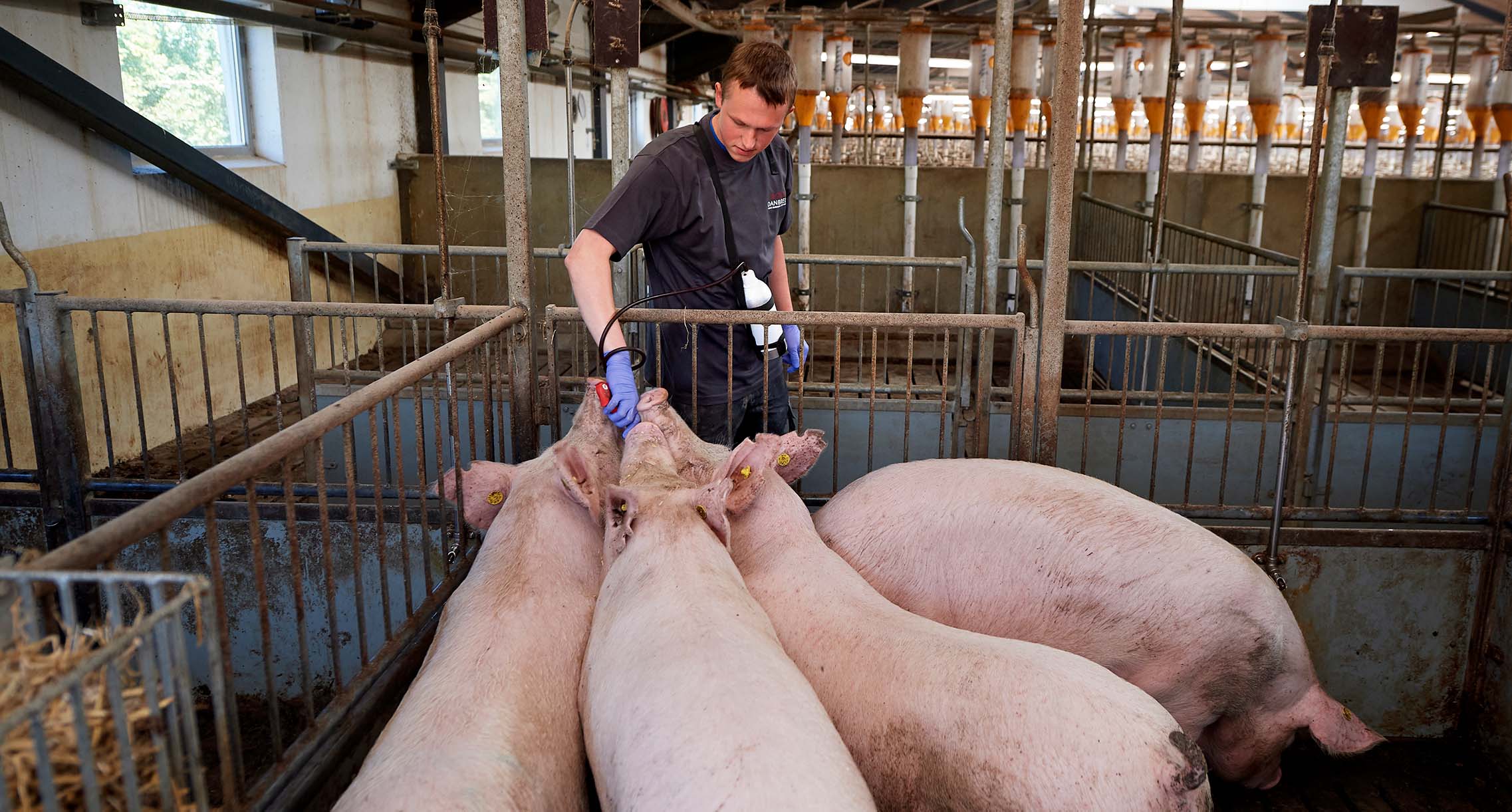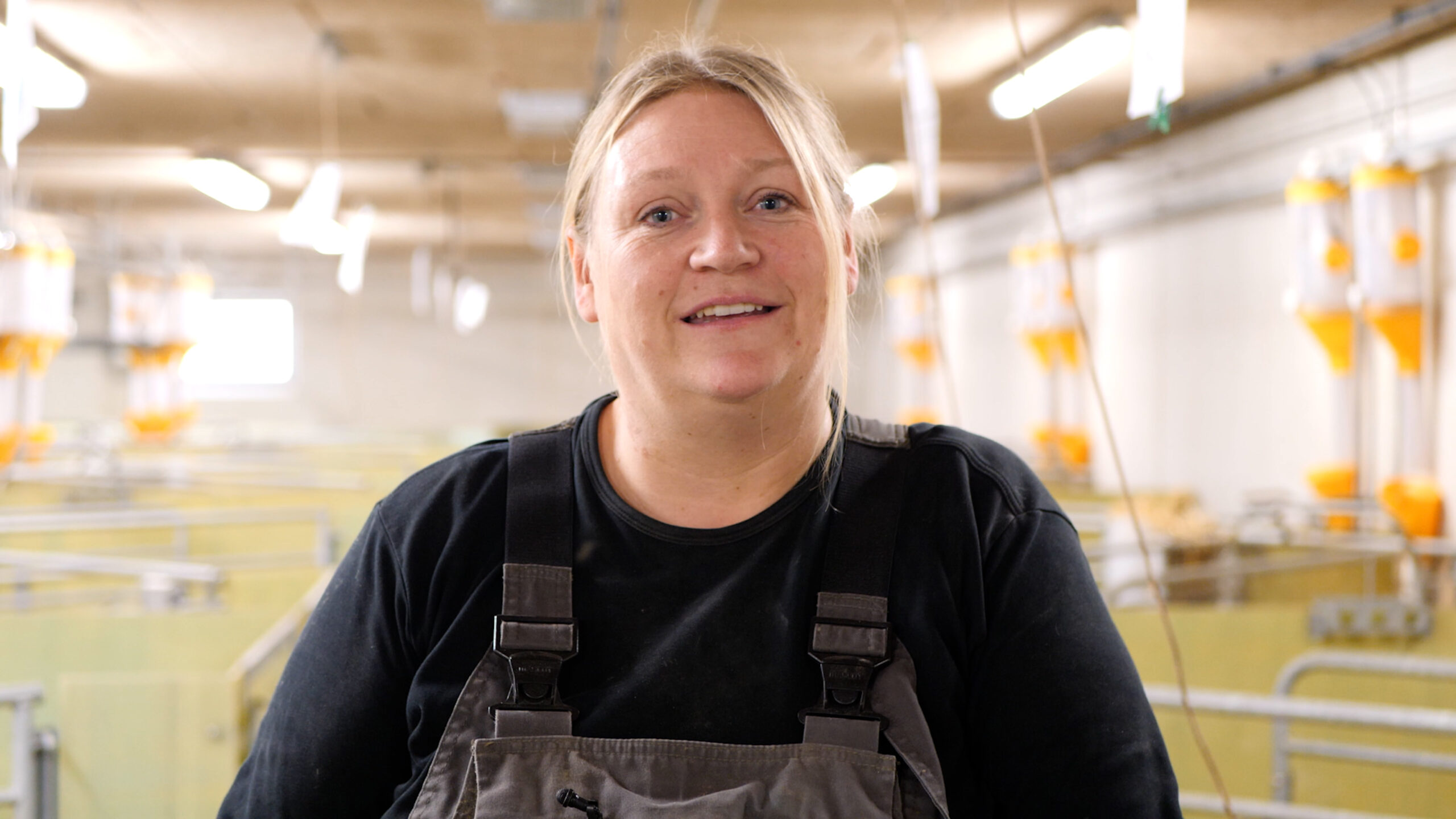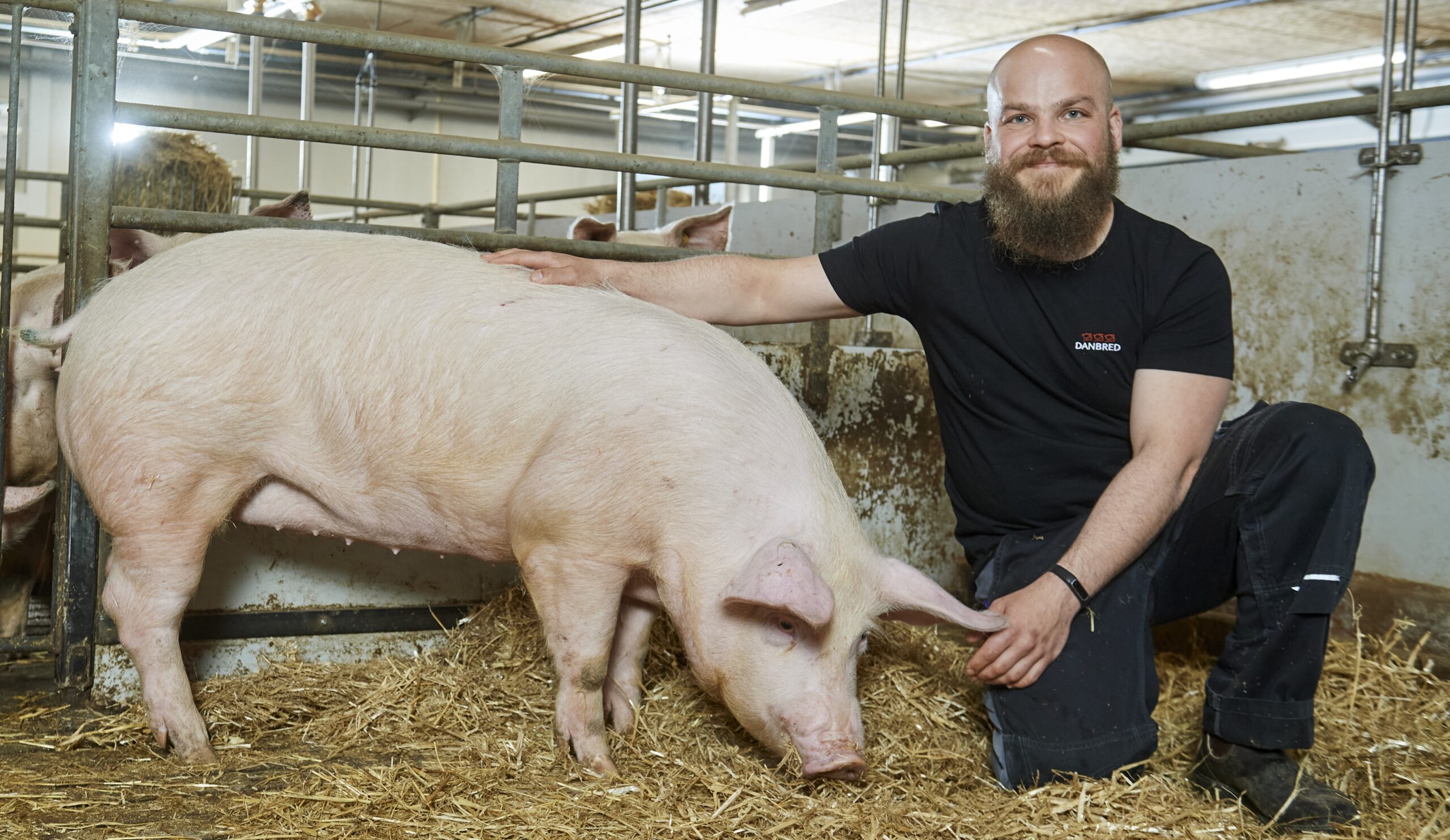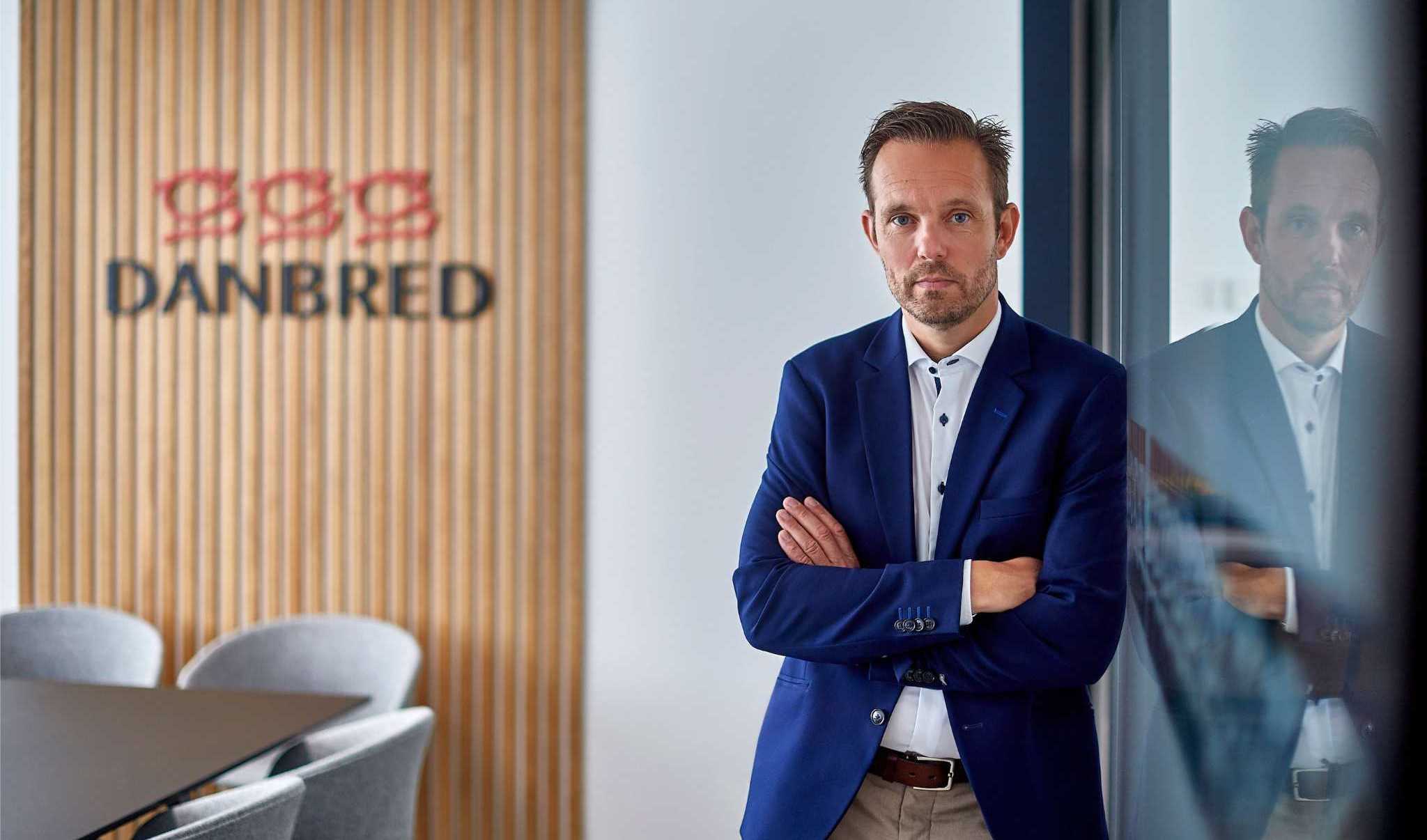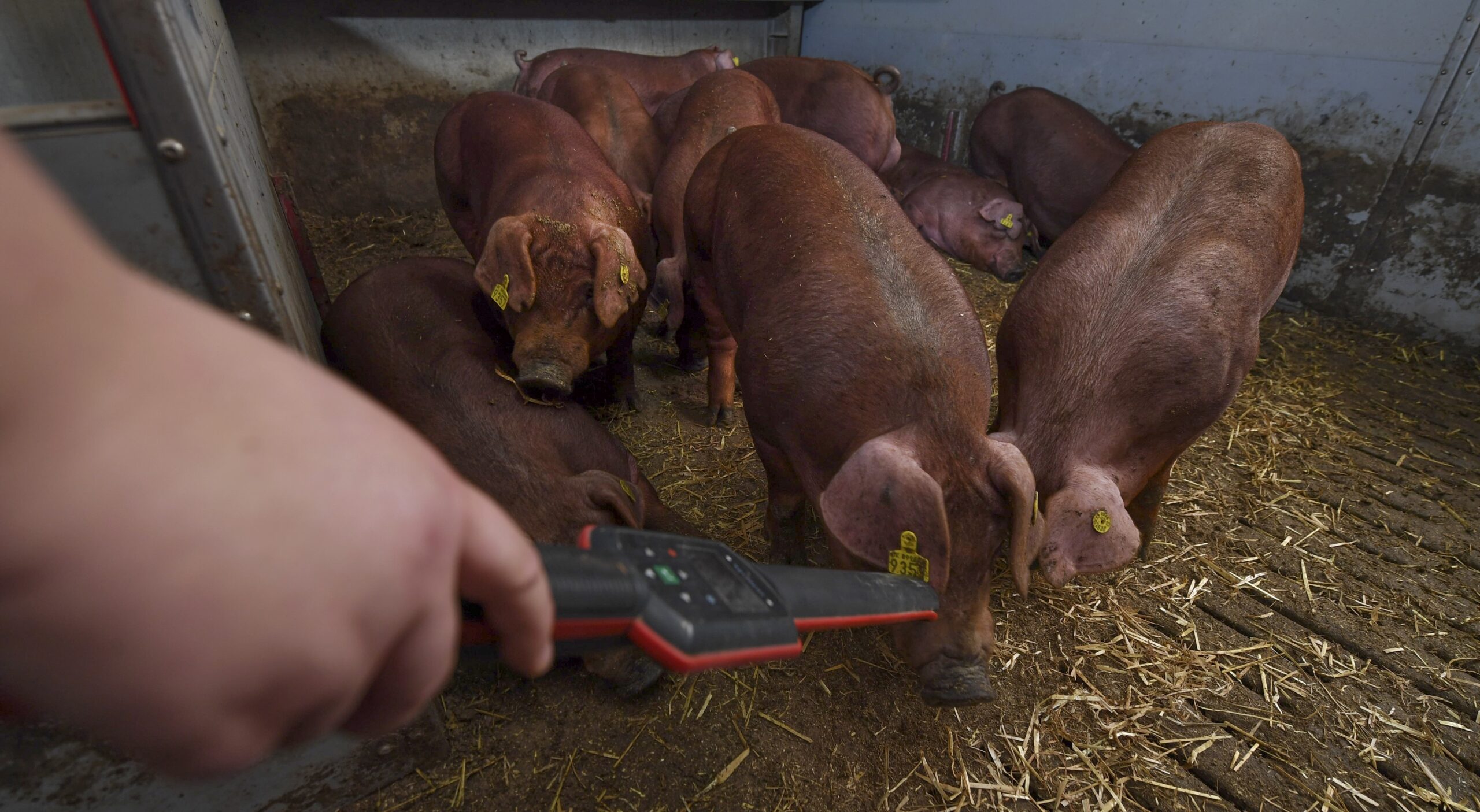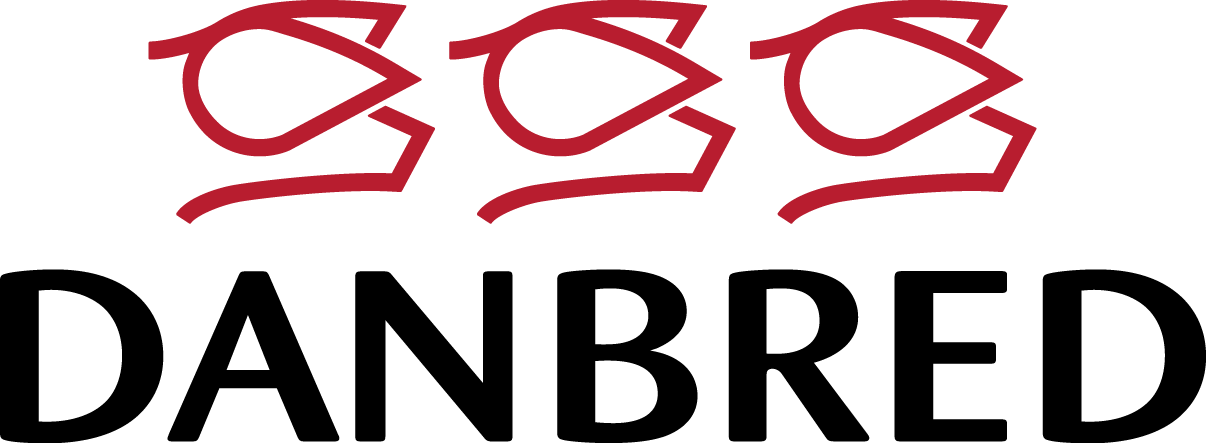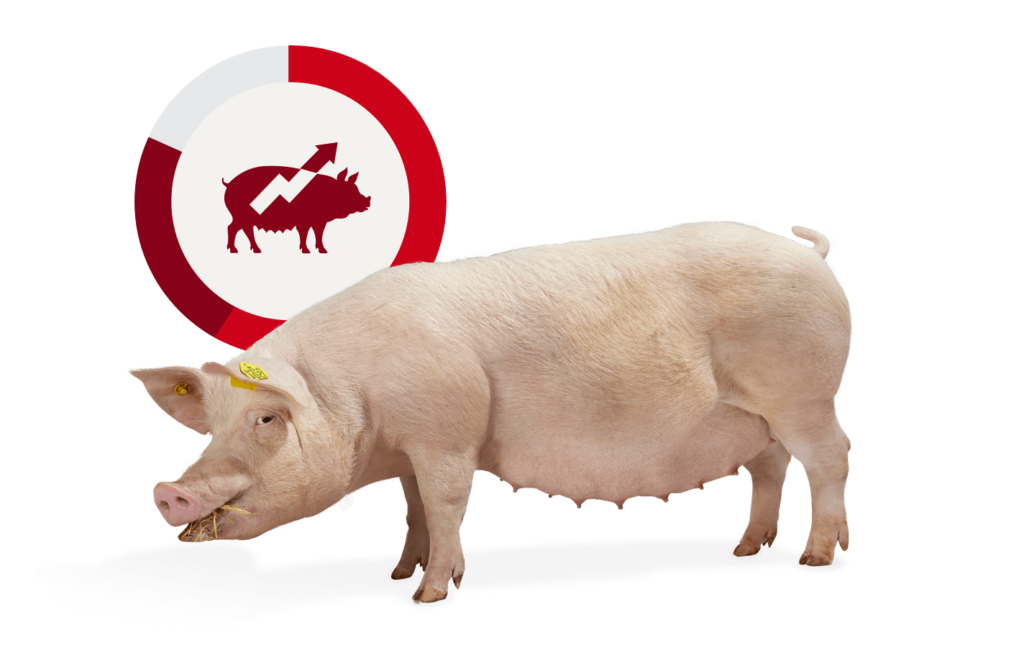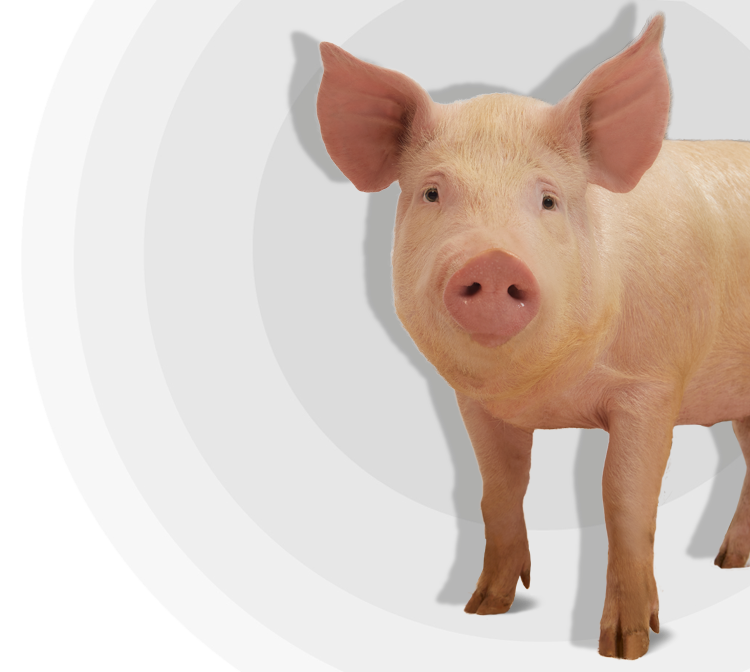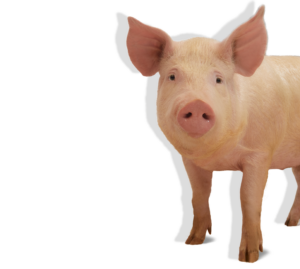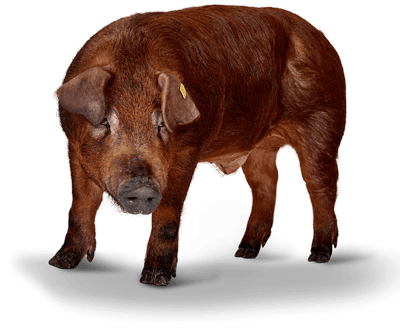Most producers of finisher pigs aim to achieve pigs with high daily gain, where all pigs raised in the same section can be sent to slaughter at the same time (or at least within the shortest period possible).
However, this is not simple to achieve; pigs do not always grow at the same rate, as different variables can have huge impact on the daily gain. Increased knowledge of the individual pig’s history may help us predict the future daily gain and exactly how long it will take for the pig to reach the desired slaughter weight. This will help you as a pig producer utilise your stables’ maximum capacity and achieve the full potential of your animals.
Different management variables have a big impact on daily gain, e.g., feeding strategy and age at weaning. Generally, the production of finisher pigs does not use individual marking, which makes it difficult to sort the pigs based on their history when they arrive to the section. When we know the pig’s history, we can use our knowledge of the variables that may influence the pig’s future daily gain to utilise the full potential going forward. In Denmark, daily gain is usually registered per section, which means we do not draw on the pig’s history to anticipate expected daily gain. E.g., in sow herds, producers focus more on daily gain in the farrowing unit, in terms of weaning weight, but focus less on how the pigs will grow later on in their lives – and vice versa for the other units. And a lot of studies have had the same categorised approach of looking at each section isolated from the others.
That is why, most productions sort the pigs based on what we can see, i.e., the pig’s size, instead of on the age or other parts of the pig’s history. But how does the management in the farrowing unit or movements between pens affect the daily gain from birth to slaughter?
Several advantages of knowing the pig’s history and expected daily gain
Your production can benefit from you using the correlation between the pig’s history and expected daily gain:
- Producers of finisher pigs use only an estimated weight to decide when to move the pigs to the finisher section, and the pigs are sorted based on this weight. If the pig’s age and history have a larger impact on the daily gain and the finisher period, then we should sort the pigs based on these two parameters. This will help the farmers utilise the maximum potential of the capacity, as we can send as many pigs as possible to slaughter at the same time. But of course, this will require that we register pigs individually using digital tools.
- If we know that a particular background has a negative effect on daily gain and can prolong the finisher period, then, we can implement initiatives to minimise this. E.g., if we know that movement between pens affects the daily gain negatively, we can reduce the movement between pens.
- Pigs with similar growth and weight gain need the same feed composition. When we change the feed in the finisher section at around 80 kg, there will be a difference in weight between the biggest and the smallest pigs of around 24 kg. Although, we sort the pigs by their weight when they arrive, there are still big differences in weight between the pigs. There are many reasons for this, but if we can predict the daily gain of the pigs, then we will have a better chance to achieve the ideal production with a finisher section of pigs of similar weight.
The sow has a strong impact on her offspring’s daily gain
Using weaning weight and age to predict the pig’s potential is quite tricky because of several factors. Weaning weight is, to a large degree, determined by the piglet’s birthweight and genetic potential for daily gain. However, a sow’s milk production also has a big impact on the piglets’ weight gain. Fourth-parity sows can nurse bigger piglets, which results in 17 % more litter weight gain compared to first-parity sows, because they have different biology and milk yield. However, piglets from first-parity sows have implemented the most recent DanBred breeding progress and will be able to gain +10 g/day after weaning more than piglets from fifth-parity sows, even if they start with a lower weaning weight.
Therefore, we see in practice that sorting the pigs by weaning weight does not ensure the same weight, when we move them to the finisher section (around 30 kg). Many of the smaller pigs grow faster and overtake those who were bigger at weaning. From that, we can determine that we need to collect a larger amount of data to have a sufficient amount of significant information about the pig’s history to predict future gain. The pig’s performance is affected by a lot of variables, not just management and feeding, which can provide useful input to adjust for potential for daily gain in later sections.
The impact of the pig’s history
Let us dive even more into the data… A study in a Danish sow herd using DanBred genetics showed the huge impacts that different variables have on daily gain. The daily gain from day 3 after farrowing until 9 weeks after farrowing was registered at different ages of weaning (4 vs 5 weeks) and with different feeding strategies in the farrowing unit (dry vs wet feeding for piglets from day 10 after farrowing) [2]. A cross-sectional analysis showed that management has a big impact on daily gain: both feeding strategy and age at weaning. Feeding strategy showed a larger impact (20 g/day) than the weaning age (8 g/day), as shown in Table 1. The results were a bit surprising, as the researchers had actually expected the age at weaning to have a bigger impact than the feeding strategy, since the piglets normally do not consume large amounts of feed in the farrowing unit.
The study also proved similar results as other studies: the piglet’s weight in the farrowing unit does have some impact on the daily gain. If a piglet weighed 100 g more at day 3 after farrowing, it grew 11 g more per day from day 3 until 9 weeks after farrowing. If a piglet was moved to another sow in the farrowing unit, it showed a negative impact (-18 g/day). And a sick piglet, that was treated in the farrowing unit, had a lower daily gain of 66 g/day.
Table 1
Variables’ effect on daily weight gain from day 3 after farrowing until 9 weeks after farrowing.
(standard error of the mean = SEM).
| Variables | Effect on daily weight gain (g per day) | SEM |
|---|---|---|
| From dry feeding to wet feeding | + 20 | 2.55 |
| From a weaning age of 4 weeks to a weaning age of 5 weeks | + 8 | 2.57 |
| Weight at day 3 after farrow (100 g more than a comparable pig) | + 11 | 0.22 |
| From no movement between pens to movement | - 18 | 5.21 |
| From no treatment to individual treatment | - 66 | 2.12 |
The data used in the study was collected from around 30 % of the piglets per one batch. The piglets were selected based on weight at day 3 after farrowing, and piglets that weighed less than 800 g were not included. All pigs were born during the same period.
It is crystal clear that the pig’s history has an impact on its future performance, but can we also use this knowledge to predict the pig’s future performance? In order to determine whether a given history can predict the pig’s future gain, we need to use other analytical methods that can show the correlation between two or more parameters.
In 2012-2013, SEGES Innovation collected and analysed data from 5,079 individual DanBred pigs. The aim of the study was to investigate whether the pigs’ daily gain in the finisher section could be predicted based on the piglets’ performances in the farrowing unit and the weaner unit [3]. The data was collected from seven Danish herds.
The analysis showed that the pigs’ weight gain in the finisher section can be predicted with more precision, when we know the pig’s history in the farrowing unit and the weaner unit, compared to if we only know the weight at arrival to the finisher section.
The most accurate prediction can be done when we know the weaning weight and age at weaning, the daily gain in the farrowing and weaner unit as well as the weight at arrival to the finisher section. Moreover, the piglets’ daily gain in the farrowing unit alone actually showed a more significant prediction of daily gain in the finisher section, than the weight at arrival to the farrowing unit.
New study investigates correlations from birth to slaughter
At the moment, SEGES Innovation is collecting relevant data from birth to slaughter of around 4,000 pigs from a Danish integrated herd using DanBred genetics. The pigs must be registered, given an electronic ear tag, and weighed individually after birth. All related information must be registered digitally, such as:
- Weight at all stages, i.e., at movement between pens, stables, sections, and, finally, at slaughter.
- Treatment and movements (date and age).
This data will be used to verify the correlations between history and future daily gain found in previous studies. Next, SEGES Innovation plan to investigate where the difference in future daily gain occurs in practice, and how big of an economic impact this will have for the pig producers. This means that if the daily gain in the farrowing unit has the largest impact on daily gain in the finisher section, we can use this knowledge to improve the daily gain of all pigs.
When we know the pigs’ individual histories, then we can provide the right management and the right feeding strategy to utilise their full potential. That means more economic profit for you as a pig producer by using your resources more focused on achieving the optimum daily gain for all of your finisher pigs.

